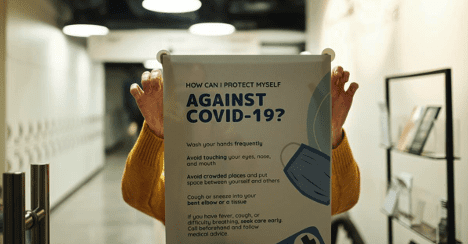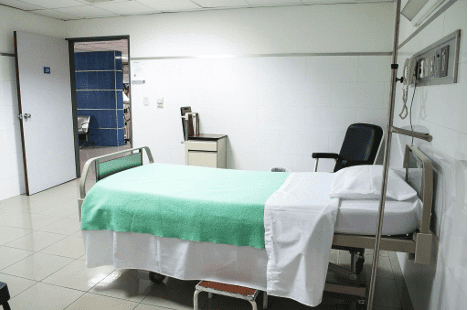
Breaking into the healthcare industry as a medical startup is no small feat. With constant innovation and a competitive landscape, standing out requires more than just a groundbreaking product. It’s about connecting with the right audience and building trust in a field where credibility is everything. That’s where strategic public relations (PR) comes into play.For instance, promoting products like bariatric calcium chews can benefit from a well-crafted PR strategy that reaches both patients and healthcare providers effectively.
PR isn’t just about press releases; it’s about crafting a narrative that resonates with patients, providers, and stakeholders. By leveraging effective PR strategies, we can position our startup as a trusted leader in the medical field. According to the Public Relations Society of America (PRSA), strong PR efforts help organizations communicate authentically and build lasting relationships. For medical startups, this can mean the difference between being overlooked or becoming a go-to solution in the industry.
Let’s explore actionable PR tips to help medical startups reach the right audience and make a lasting impact.
Contents
Understanding Public Relations for Medical Startups
Public relations plays a critical role in bridging the gap between medical startups and their target audience. It focuses on building credibility, increasing visibility, and cultivating trust in a competitive healthcare landscape.
The Importance of PR in Healthcare
PR helps medical startups establish authority and gain trust in a highly regulated and scrutinized industry. Effective PR strategies promote new medical technologies, such as innovative healthcare devices, and position startups as thought leaders. For instance, a robust PR campaign enhances messaging around life-improving technologies, making them more accessible to patients and providers alike.
Successful PR integrates storytelling with evidence-based communication. This approach ensures that the startup’s innovations resonate with audiences, addressing both medical community needs and patient concerns. Addressing industry regulations and demonstrating ethical practices are also essential components of healthcare-focused PR.
Common Challenges Faced by Medical Startups
Medical startups often struggle with building awareness and differentiating themselves in a crowded market. Limited budgets can restrict access to advanced PR tools and top-tier media channels. Navigating regulatory requirements and maintaining compliance while crafting a compelling narrative is crucial. Missteps in messaging can harm credibility. Additionally, startups frequently face difficulties identifying their core audience, resulting in diluted efforts. Strategic PR planning, market analysis, and targeted messaging are essential to overcome these obstacles.
Identifying Your Target Audience
Understanding the audience is pivotal for medical startups aiming to create effective PR strategies. Pinpointing the right stakeholders ensures that messaging aligns with their needs and priorities.
Key Stakeholders in the Healthcare Industry
Key groups in the healthcare sector include patients, healthcare providers, and investors. Patients seek trust, accessibility, and solutions like innovative devices for enhanced convenience. For instance, users might prioritize technologies such as the Inogen One G4 portable concentrator to address specific health needs. Providers look for reliable data and clinical outcomes before recommending products, while investors focus on scalability and market potential.
We also consider regulators and insurers as significant stakeholders. Regulatory bodies demand compliance with healthcare standards, while insurance companies evaluate cost-effectiveness for coverage. Crafting tailored messaging for each group fosters engagement and successful communication.
Researching and Building Audience Personas
Creating detailed personas involves analyzing demographic, psychographic, and behavioral data for diverse audience segments. For example, data on patients might include age, medical needs, and preferences for portable technologies. Surveys and interviews can help uncover insights directly from the target audience.
We use social media analytics, industry reports, and competitor studies to refine these personas. Each persona guides the tone, channels, and strategies for communication in PR campaigns, ensuring relevance and resonance in messaging.
Crafting an Effective PR Strategy

Photo by Martha Dominguez de Gouveia on Unsplash
An effective PR strategy is essential for medical startups to connect with their audience, establish credibility, and navigate the competitive healthcare space. By focusing on targeted messaging, suitable communication channels, and consistent outreach, we can enhance visibility and build trust.
Developing Clear Messaging
Clarity is critical when crafting PR messages for medical startups. We create messaging that simplifies complex medical concepts while aligning with audience priorities. For example, when targeting healthcare providers, data on clinical efficacy and patient outcomes takes precedence. With patients, trust and ease of use should be highlighted.
Consistency across all messaging ensures that startups maintain their brand voice whether reaching investors, regulators, or providers. Tailored messages reduce miscommunication and build trust within each audience segment.
Choosing the Right Communication Channels
Selecting appropriate channels directs our PR efforts to the audience most likely to engage. For startups targeting healthcare providers, industry publications, medical conferences, and scientific journals are ideal. Patients respond better to social media, health blogs, and online forums.
Regulatory authorities and investors may require direct communication through meetings or press briefings. Using analytics tools, we evaluate each channel’s effectiveness, adjusting efforts where engagement is highest. For instance, promoting products could leverage patient blogs and professional healthcare networks to reach both consumers and physicians effectively.
Timing and Consistency in Your Outreach
Strategic timing improves public relations success. Launching campaigns during relevant industry events, such as healthcare summits or awareness months, maximizes visibility. Consistent updates that align PR efforts—like monthly press releases or periodic social media posts—keep the audience engaged.
We maintain clear schedules, ensuring follow-ups after product launches or investor meetings. A consistent cadence, coupled with timely releases, builds momentum, enhancing a startup’s credibility.
Leveraging Digital Platforms for PR
Digital platforms provide medical startups with powerful tools to connect with their target audience, build credibility, and amplify their message. They enable precise targeting and real-time engagement, ensuring PR efforts achieve maximum impact.
Utilizing Social Media for Audience Engagement
Social media channels like LinkedIn, Twitter, and Facebook are crucial for engaging diverse audiences in healthcare. Startups can share patient success stories, research findings, or educational content that highlights the benefits of innovative solutions, like advanced medical devices. For example, posting testimonials or usage tips can engage potential patients and caregivers effectively.
We recommend tailoring content formats to match platform specifics. Visual content such as infographics or short video explainers works well on Instagram and Facebook, while in-depth industry discussions fit LinkedIn. Regular interactions with followers, such as responding to comments or conducting Q&A sessions, can build trust and authority. Incorporating trending healthcare hashtags boosts visibility and broadens reach.
Building Relationships with Health-Focused Media
Collaborating with health-focused media enhances a startup’s credibility and positions it as an industry expert. Establishing relationships with journalists and editors from outlets like medical journals, health blogs, and news platforms is vital for generating exposure. Sharing accurate data, clinical studies, and patient-centric success stories aligns with these platforms’ focus on reliable healthcare advancements.
Press releases detailing product milestones or highlighting unique offerings, like portable oxygen concentrators, can grab media attention. Targeted pitching ensures the information resonates with the audience of each publication. Engaging in guest blogging or contributing op-eds in leading health-media outlets helps build long-term visibility while reinforcing thought leadership in the healthcare sector.
Measuring PR Success and Adjusting Strategies
Evaluating the effectiveness of PR efforts helps medical startups refine tactics and achieve desired outcomes. This process ensures campaigns remain impactful and relevant to key audiences.
Key Metrics to Track
Tracking measurable indicators is critical for assessing PR performance. Media coverage volume reflects visibility and helps understand how often the startup appears in relevant publications. Share of voice compares the coverage against competitors, identifying market positioning. Website traffic and backlink tracking show the impact of PR activities on online engagement. For example, monitoring visits from press release links reveals ROI on specific campaigns.
Social media metrics such as impressions, shares, and engagement rates provide insights into audience interaction with published content. Sentiment analysis evaluates public perception, ensuring messaging aligns with brand values. Audience growth, including new followers or subscribers, reflects campaign relevance. Conversion rates from PR channels, such as sign-ups or inquiries about products like the Inogen One G4 Portable Concentrator, gauge direct outcomes from efforts.
Adapting to Audience Feedback
Adjusting PR strategies based on audience reactions strengthens campaigns. Conducting regular social media monitoring reveals trending topics and sentiment shifts, which guide message adjustments. Analyzing survey responses or feedback forms identifies gaps in information or dissatisfaction with specific PR initiatives.
Testing different message formats or tones using A/B campaigns fine-tunes communication effectiveness. For instance, revising medical product explanations based on confusion or misinterpretation can improve clarity. Public engagement, such as Q&A sessions or forums, uncovers concerns and expectations. Tracking responses to updates, such as adjustments in product messaging around innovations similar to portable concentrators, ensures content remains relevant to the audience’s evolving needs.
